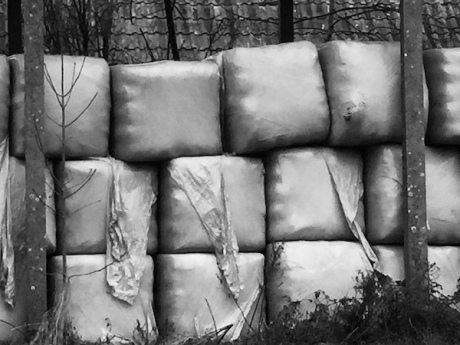Over the years I have engaged in agricultural work in a number of ways, enjoying the physical labor, with a keen interest in the history of the relationship between humans and the land in specific places; how this relationship has changed over time and how surprisingly many things remained the same, old wine in new bags, so to speak. Curious in what way we value our land, the food we grow to raise our children and the people who are invested in tending this process, the farmers, the farmworkers, the social relationships.
Sicily for instance, the ‘granary’ that for long sustained and enabled many empires and kingdoms on the European continent. The island that enjoyed a rich, thriving culture in which different religions existed peacefully side by side during the Middle Ages while the rest of Europe was shrouded in ‘darkness’, however remained basically a feudal system when elsewhere the rise of capitalism transformed peasants from a life as serfs into freeholders.
In England the Charter of the Forest, signed in 1217 re-established the rights for free men to access to the royal forest, including large areas of commons, such as grassland and wetlands, providing food, grazing and other resources.
Unfortunately, this promise of equality did not hold for long, the free market ideology has created a similar hierarchy of poor peasantry and wealthy landowners for whom money is king. It didn’t develop as a free market but rather was established from above, imposed by a deeply rooted ruling class. Farmers were and still are at the low end mostly, and in our days, are at the mercy of corporate giants and their political puppets.
Many of us realize that the dominant way we approach our land and our food is taking us into a downward spiral. Sharing-, circular-, care- are now proposed as alternative economies to counter this downfall.
The organic movement for instance refers to organizations and individuals involved worldwide in the promotion of organic farming and other organic products, which already started around the first half of the 20th century, as an alternative to modern large scale agricultural practices.
It was however much later that the real push began to reconnect people in the city back to the countryside, likely as a response to the 1962 publication of Silent Spring, by Rachel Carson, chronicling the effects of pesticides on the environment, thereby effectively launching the environmental movement, and the notions of sharing and caring,
One such sharing network started out in United Kingdom in the early 1970’s, “as an exchange between urban dwellers, who wanted a piece of rural living without giving up their existing lifestyle and small rural landowners, who needed help tending to their daily activities. It basically started out as recreative opportunity in which no money changed hands, but over the years this network, known as wwoof, worldwide opportunities on organic farms, has grown into a global network of connecting people in the organic movement that continues to adhere to the principle of moneyless exchange.
In my early days of farming, I enjoyed being part of this network and the principles it stands for, but over the years I have grown more skeptical. What started out as an idealistic program has grown into a something more heterogeneous. Although great experiences can still be had, and hopefully this continues, it has also allowed for exploitation of cheap labor, situations where workers are vulnerable and taken advantage of.
Although my experience is mainly from the land worker perspective observing the exploitative nature these host-worker relationships tolerate, it also lays bare a deeper problem with our food system. The fact that farmers and farm work is undervalued; good food cannot be produced for the price the market is prepared to pay, when (organic) farmers have to revert to cheap or free labor, and when wealthier landowners can exploit vulnerable workers, we have not really moved on from the early days of serfdom.
It concerns me deeply, the slow growth and transformation of well intended grassroots efforts into monsters of inequality and exploitation while on the surface, apparent “awareness’ numbs our sense of reality and responsibility. It is happening right under our noses if we care to take a whiff.
.





